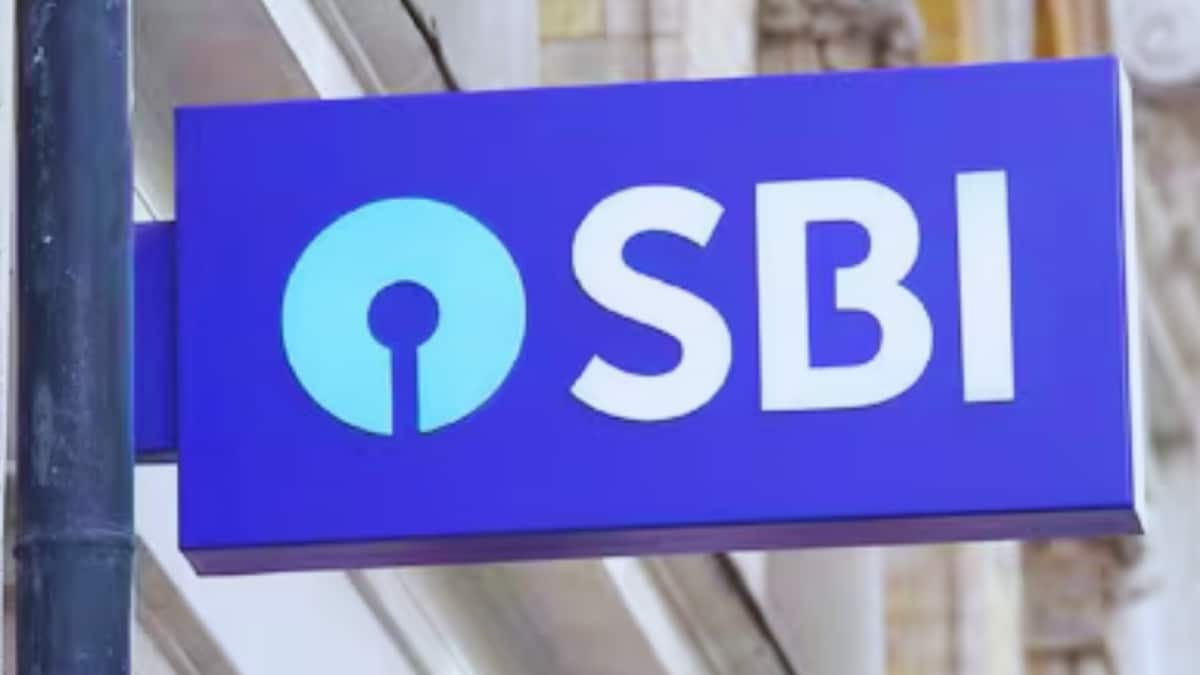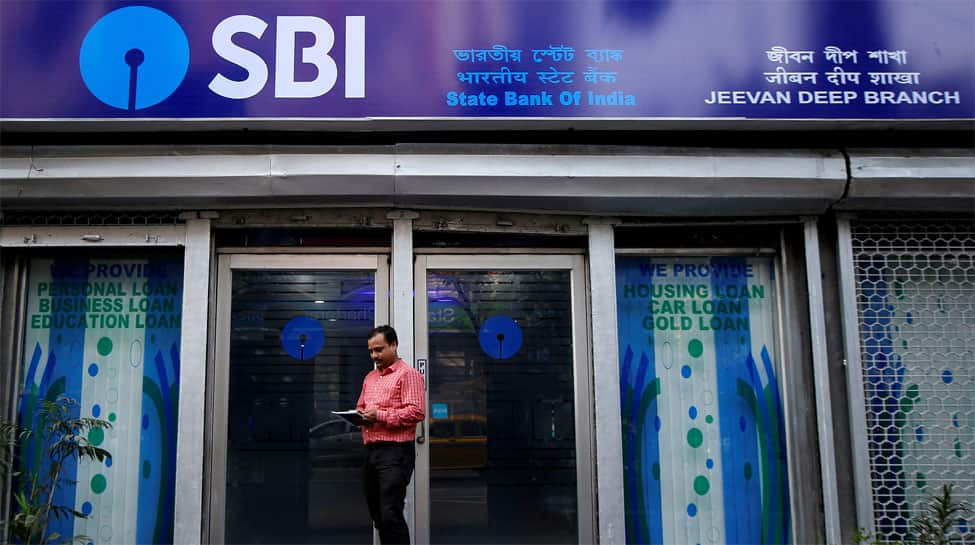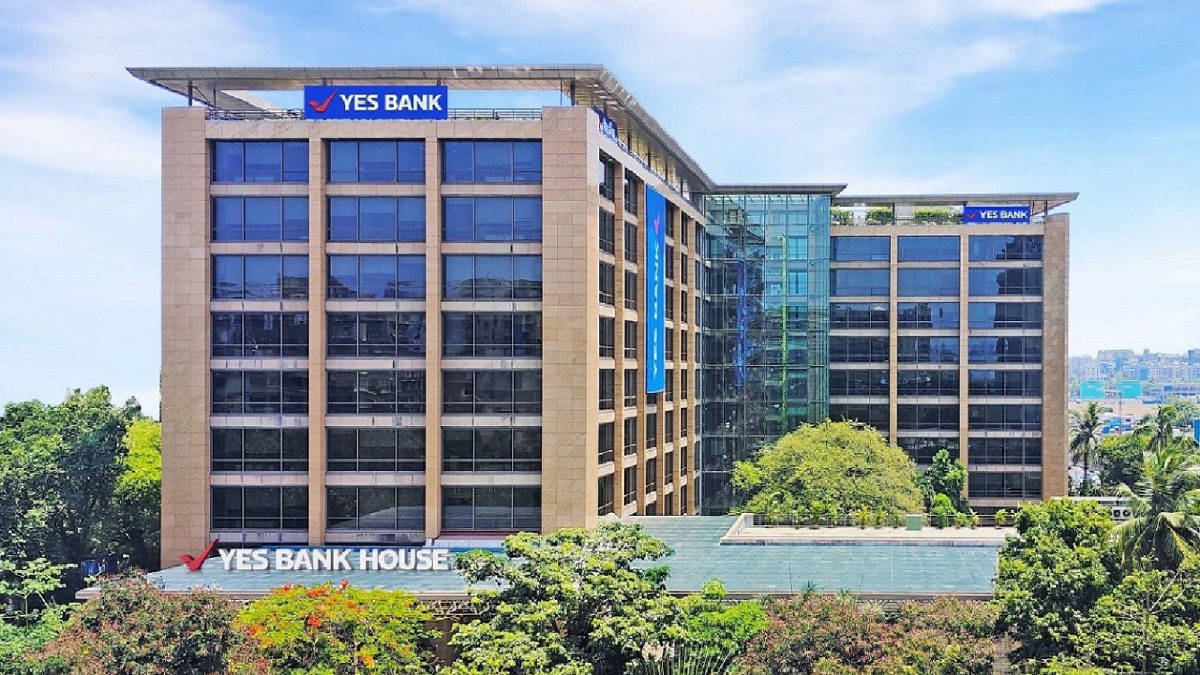Business
LIC Trims Stakes In HDFC, ICICI, Kotak; Bets On SBI, Yes Bank: Key Takeaways For Investors

Last Updated:
According to data, LIC added 6.41 crore shares of SBI during the quarter, amounting to an investment of roughly Rs 5,285 crore

LIC
Life Insurance Corporation of India (LIC), the country’s largest institutional investor with an equity portfolio worth over Rs 16 lakh crore, made bold portfolio moves in the September quarter, trimming its holdings in top private sector lenders—HDFC Bank, ICICI Bank, and Kotak Mahindra Bank—while sharply increasing exposure to public sector giant State Bank of India (SBI) and the smaller Yes Bank.
According to data from Prime Database, LIC added 6.41 crore shares of SBI during the quarter, amounting to an investment of roughly Rs 5,285 crore. In a contrarian move, the insurer also quadrupled its stake in Yes Bank—from less than 1% in June to 4% by September—even as several domestic institutional investors reduced their exposure to the stock.
At the same time, LIC sold shares worth an estimated Rs 3,203 crore in HDFC Bank, Rs 2,461 crore in ICICI Bank, and Rs 2,032 crore in Kotak Mahindra Bank. The sell-down caused overall insurance company holdings in these lenders to drop by 8–10% sequentially, marking LIC’s sharpest pullback from India’s leading private banks in recent years, Prime Database noted.
“A significant trend in the market is the resilience of the PSU banking space. This segment is even now attractively valued in a market which is richly valued,” said VK Vijayakumar of Geojit. “The prospects of this segment look bright in the context of the coming merger of PSU banks.”
The timing of LIC’s shift is notable. Even as the insurer increases exposure to public lenders, foreign investors have been pouring capital into private banks in 2025. Emirates NBD acquired a 60% stake in RBL Bank for $3 billion, Sumitomo Mitsui boosted its holding in Yes Bank to 24.2% following a $1.6 billion investment, and Blackstone bought nearly 10% of Federal Bank for Rs 6,196 crore.
Market expert Neeraj Dewan cautioned that valuations of PSU banks already reflect high expectations. He noted that while smaller PSU banks have delivered decent results, sustaining momentum will depend on how well they capture loan demand amid easing interest rates and improved liquidity. Dewan warned that after a strong rally, even a slight earnings miss could trigger investor disappointment.
LIC’s broader equity strategy during the quarter underscored its value-oriented approach. The insurer increased stakes in 68 NSE-listed companies, with an average decline of 5.55% in their purchase prices—indicating opportunistic buying in beaten-down counters—while trimming positions in 94 firms that saw stable prices, consistent with profit-taking behavior.
Brokerage Motilal Oswal highlighted that both private and public sector banks delivered solid Q2 results. Private lenders benefited from stronger net interest margins and healthy credit growth, while PSU banks also reported robust performance. Many banks, it added, have guided for further margin expansion in the second half of FY26, supported by the recent cash reserve ratio (CRR) cut and improving growth momentum.
ArunaGiri N, CEO of Trustline Holdings, remarked that the recent wave of foreign direct investment could be an early sign of broader institutional inflows. He suggested that FDI often precedes renewed foreign institutional investor (FII) participation, implying a potential comeback of FIIs in India’s private banking space.
The performance gap between PSU and private banks has been evident in recent months. Over the past three months, the Nifty PSU Bank index has surged more than 21%, while the broader Nifty Bank index has gained just over 4%.
According to Shibani Sircar Kurian of Kotak Mahindra AMC, valuations in the banking sector remain attractive relative to historical levels. She maintained a positive view on the space, with a slight preference for private banks but a focus on larger PSU lenders that still offer improving return ratios and favorable valuations. Kurian also noted that bigger PSU banks are better positioned to benefit from rising retail credit demand and lower funding costs as deposit rates ease.
Meanwhile, the government is reportedly considering allowing direct foreign investment in state-run banks of up to 49%, more than double the current ceiling. Analysts at Nuvama estimate that such a move could trigger as much as $4 billion in passive inflows into PSU banks.

Aparna Deb is a Subeditor and writes for the business vertical of News18.com. She has a nose for news that matters. She is inquisitive and curious about things. Among other things, financial markets, economy, a…Read More
Aparna Deb is a Subeditor and writes for the business vertical of News18.com. She has a nose for news that matters. She is inquisitive and curious about things. Among other things, financial markets, economy, a… Read More
November 10, 2025, 15:35 IST
Read More
Business
Insolvency ruling: CoC cannot alter approved resolution plan or reallocate dissenting creditors’ funds, says NCLAT – The Times of India

The insolvency appellate tribunal NCLAT has ruled that the Committee of Creditors (CoC) cannot modify an approved resolution plan to reallocate funds meant for dissenting financial creditors, reaffirming limits on the exercise of commercial wisdom after a plan has been cleared, PTI reported.Dismissing an appeal filed by Bank of Baroda in the insolvency proceedings of Reliance Communications Infrastructure Ltd (RCIL), a two-member bench of the National Company Law Appellate Tribunal said that once a resolution plan is approved, the assenting members of the CoC cannot alter its financial distribution framework.“It is true that the CoC with commercial wisdom can take a decision regarding different aspects of the plan, including manner of distribution, but once the commercial wisdom has been exercised by approving the resolution plan in meeting, the modification of the said distribution mechanism, which is impermissible, cannot be saved in the name of commercial wisdom of the CoC,” NCLAT said in its order.The appeal arose from the insolvency resolution of RCIL, where the National Company Law Tribunal (NCLT) had approved the resolution plan submitted by Reliance Projects & Property Management Services Ltd (RPPMSL), a subsidiary of Jio. The plan was approved by 67.97 per cent of the CoC by vote share on August 5, 2021.While Bank of Baroda voted in favour of the plan, lenders including IDBI Bank and State Bank of India dissented. The plan was subsequently placed before the Mumbai bench of the NCLT for approval.Bank of Baroda later approached the NCLT seeking directions to convene a CoC meeting to consider reallocation of proceeds under the approved resolution plan, particularly in relation to a loan to Reliance Bhutan. Acting on this, the NCLT on October 17, 2023 directed the resolution professional to convene a CoC meeting.At the meeting held on October 27, 2023, a resolution proposing reallocation and reassignment of the Reliance Bhutan loan was passed with a 67.55 per cent majority, though IDBI Bank and SBI objected to the move.On December 19, the NCLT approved the resolution plan as originally proposed by RPPMSL. IDBI Bank subsequently challenged the October 27, 2023 CoC decision, arguing that the reallocation of proceeds violated the approved resolution plan.The NCLT held that the CoC could not alter the financial layout relating to the entitlement of financial creditors once the resolution plan had been approved. It also noted that the Reliance Bhutan loan, which was to be assigned to assenting financial creditors under the plan, could not be reassigned to dissenting lenders through a subsequent CoC decision.In its October 10, 2025 order, the NCLT ruled that the approved resolution plan could not be modified in this manner. Bank of Baroda challenged this decision before the NCLAT.Upholding the NCLT’s view, the appellate tribunal said, “The Adjudicating Authority in the impugned order after considering all relevant clauses has rightly come to the conclusion that the decision of the CoC dated 27.10.2023 is contrary to the approved resolution plan and cannot bind the dissenting financial creditors.”“We are in full agreement with the view taken by the adjudicating authority as noted above. The adjudicating authority did not commit any error in allowing the plea filed by the IDBI Bank. We do not find any good ground to interfere with the decision of the adjudicating authority,” NCLAT added, dismissing the appeal.
Business
Apollo Techno Industries IPO Last Day: Issue Receives 50.63x Subscription; GMP Rises To 9.23%

Last Updated:
Unlisted shares of Apollo Techno Industries are trading at Rs 136 apiece in the grey market, which is 4.6% premium over the issue price of Rs 130, indicating weak listing.
Apollo Techno Industries IPO.
Apollo Techno Industries IPO GMP: The initial public offering (IPO) of Apollo Techno Industries Ltd (ATIL) has been closed today, Friday, December 26. The price band of the Rs 47.96-crore IPO has been fixed in the range of Rs 123 and Rs 130. On the final day of bidding on Friday, the IPO received a total of 50.63x times subscription, garnering bids for 12,42,53,000 shares as against 24,54,000 shares on offer.
Its retail category got a 44.81x subscription, while its non-institutional investor (NII) quota got a 98x subscription. Its qualified institutional buyer (QIB) category has received a 25.26x subscription.
ATIL is a manufacturer specialising in trenchless technology and foundation equipment for the construction industry
Apollo Techno Industries IPO GMP Today
According to market observers, unlisted shares of Apollo Techno Industries Ltd are currently trading at Rs 142 apiece in the grey market, which is a 9.23 per cent premium over the issue price of Rs 130. It indicates a weak listing. Its listing will take place on December 31, Wednesday.
The GMP had stood at 4.62 per cent in the morning.
The GMP is based on market sentiments and keeps changing. ‘Grey market premium’ indicates investors’ readiness to pay more than the issue price.
Apollo Techno Industries IPO: More Details
The Apollo Techno Industries Limited IPO is a book-built issue worth ₹47.96 crore, comprising only a fresh issue of 0.37 crore equity shares. There is no offer-for-sale component in the issue.
The IPO opened for subscription on December 23, 2025, and will close on December 26, 2025. The basis of allotment is expected to be finalised on December 29, 2025, while the shares are scheduled to list on the BSE SME platform on December 31, 2025, subject to approvals.
The price band for the issue has been fixed at Rs 123 to Rs 130 per share. The lot size is 1,000 shares. Retail investors are required to apply for a minimum of 2 lots (2,000 shares), translating into an investment of Rs 2.60 lakh at the upper end of the price band. For HNIs, the minimum application size is 3 lots (3,000 shares), amounting to Rs 3.90 lakh.
Beeline Capital Advisors Pvt Ltd is the book running lead manager to the issue, while MUFG Intime India Pvt Ltd is acting as the registrar. The market-making duties will be handled by Spread X Securities Pvt Ltd.
Apollo Techno Industries reported strong financial growth in FY25. The company’s revenue rose 44 percent, while profit after tax (PAT) surged 327 percent for the year ended March 31, 2025, compared with the previous financial year.
Incorporated in 2016, Apollo Techno Industries operates in the manufacturing and technology space, with a focus on equipment used in the construction and infrastructure sector.
The company specialises in trenchless technology and foundation equipment, catering to complex construction requirements. Its product portfolio includes Horizontal Directional Drilling (HDD) rigs, Diaphragm Drilling Rigs, Rotary Drilling Rigs, along with associated spare parts.
December 26, 2025, 10:51 IST
Read More
Business
PIA privatisation drives PSX gains | The Express Tribune
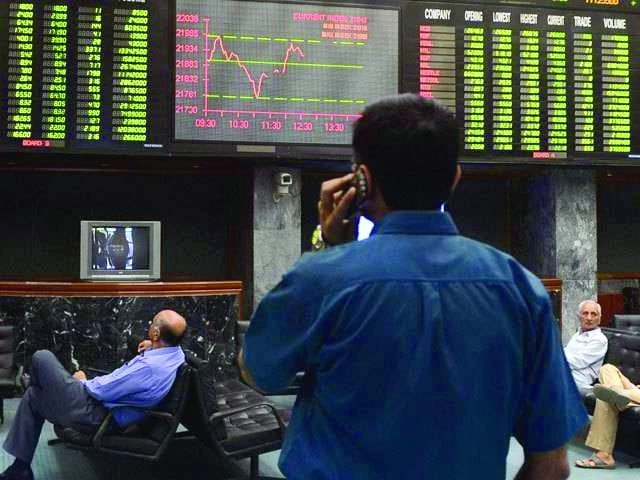
The KSE-100 Index posted a solid +0.58% gain on a week-on-week basis, closing the period on a positive note amid strong investor sentiment.
The primary catalyst was the landmark privatization of Pakistan International Airlines (PIA), finalized at Rs135 billion (approximately US$480 million), marking one of the largest and most significant privatization deals in Pakistan's history.
The successful auction, won by the Arif Habib-led consortium for a 75% stake, signals a major step toward reducing the government's burden from loss-making state-owned enterprises and boosting private sector confidence.
Market Snapshot – December 26th, 2025
Unlock today’s market moves and stay one step ahead!
Here’s what’s making waves:
ETFs (Exchange Traded Funds): Most Active in Today’s Market
Market Indices – At a Glance:
•KSE-100: Pullers & Draggers
•KMI-30: Pullers & Draggers pic.twitter.com/rCQIk0IVGt
— PSX (@pakstockexgltd) December 26, 2025
A positive session was observed at the exchange, as the index gained to close at an all-time high of 172,400 level (up by +0.92%).
Top positive contributions to the index came from ENGROH, PPL, SYS, NBP, and MLCF, as they cumulatively added +774 points to the index, according to Topline Securities. Traded value-wise, BOP (Rs3.1b), NBP (Rs2.94b), SEARL (Rs2.05b), PPL (Rs2.03b), PTC (Rs1.51b), and MLCF (Rs1.35b) dominated the trading activity. Traded value and volume for the day stood at 797 million shares and Rs38b, respectively.
Today, 59% of the total equity value traded at PSX was in Shariah-compliant stocks!
Learn about the top 3 Shariah Compliant Stocks in today's PSX Market Breakdown pic.twitter.com/TXQAxCc95U
— PSX (@pakstockexgltd) December 26, 2025
This positive momentum was further supported by the State Bank of Pakistan's (SBP) recent 50 basis points policy rate cut to 10.5%, which continued to encourage investment in equities by lowering borrowing costs and improving liquidity. Trading activity remained robust, with average daily volumes at 736 million shares and a value of Rs31.5b.
Analysts view this as a turning point for market reforms, with the PIA deal expected to pave the way for more divestments and enhanced economic efficiency.
Source link
-

 Fashion1 week ago
Fashion1 week agoIndonesia’s thrift surge fuels waste and textile industry woes
-

 Tech1 week ago
Tech1 week agoT-Mobile Business Internet and Phone Deals
-

 Business1 week ago
Business1 week agoBP names new boss as current CEO leaves after less than two years
-

 Sports1 week ago
Sports1 week agoPKF summons meeting after Pakistani player represents India in kabaddi tournament
-
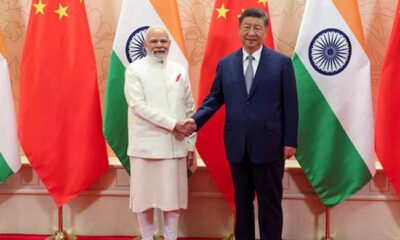
 Entertainment1 week ago
Entertainment1 week agoIndia streamlines visa rules in boost for Chinese professionals
-

 Sports1 week ago
Sports1 week agoUWCL grades for all 18 teams: Leuven get A+; Barça an A-, PSG fail
-
Sports6 days ago
Alabama turned Oklahoma’s College Football Playoff dream into a nightmare
-

 Entertainment1 week ago
Entertainment1 week agoRadiation fears rise after cracks found in $2 billion Chernobyl shield


